

Great Sand Dunes National Park
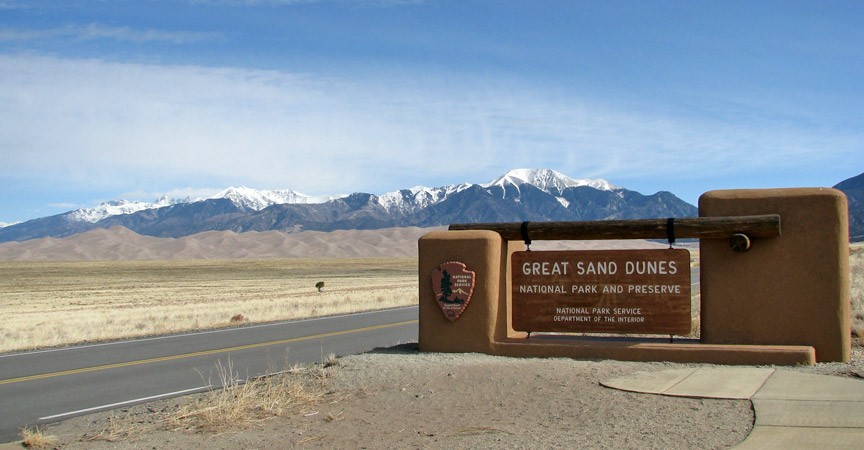
Great Sand Dunes National Park
Great Sand Dunes National Park and Preserve is a United States National Park located in Alamosa County and Saguache County, Colorado, United States. Originally designated Great Sand Dunes National Monument, Great Sand Dunes National Park and Preserve was created by an act of the United States Congress on September 13, 2004. The park contains approximately 85,000 acres (340 km˛, 130 mi˛).
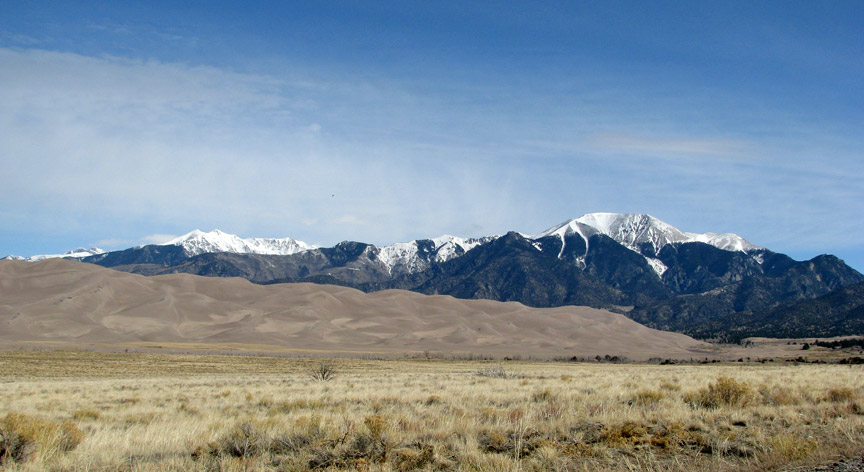
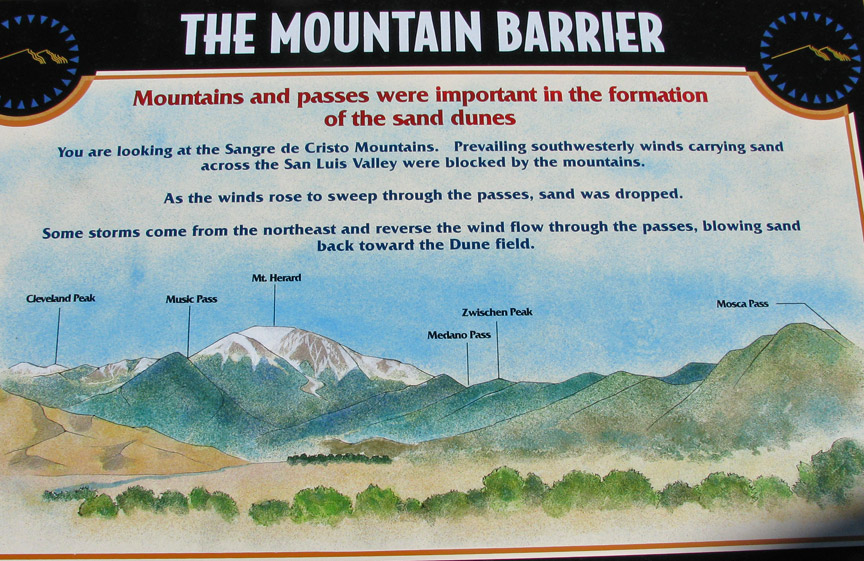
The park contains the tallest sand dunes in North America, rising about 750 feet
(230 m) from the floor of the San Luis Valley on the western base of the Sangre
de Cristo Range, covering about 19,000 acres (77 km˛). They are perhaps 12,000
years old.
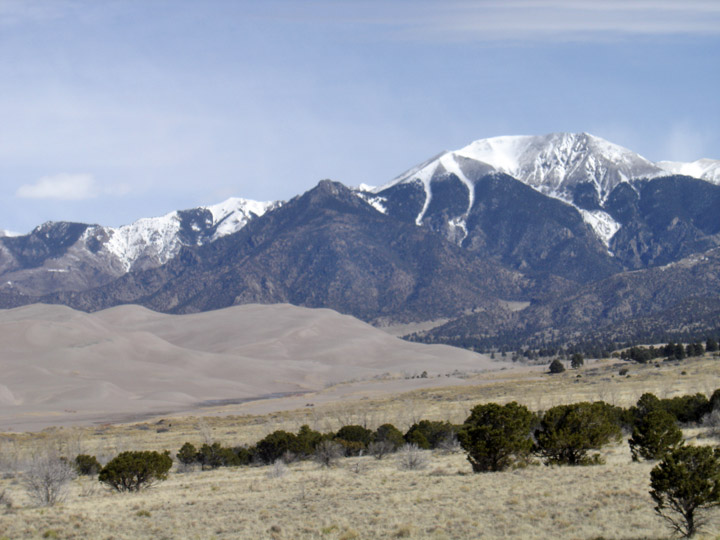
The dunes were formed from sand deposits of the Rio Grande and its tributaries,
flowing through the San Luis Valley. Over the ages, westerly winds picked up
sand particles from the river flood plain. As the wind lost power before
crossing the Sangre de Cristo Range, the sand was deposited on the east edge of
the valley. This process continues, and the dunes are slowly growing. The wind
changes the shape of the dunes daily.


There are several streams flowing on the perimeter of the dunes. The streams
erode the edge of the dune field, and sand is carried downstream. The water
disappears into the ground, depositing sand on the surface. Winds pick up the
deposits of sand, and blow them up onto the dune field once again.
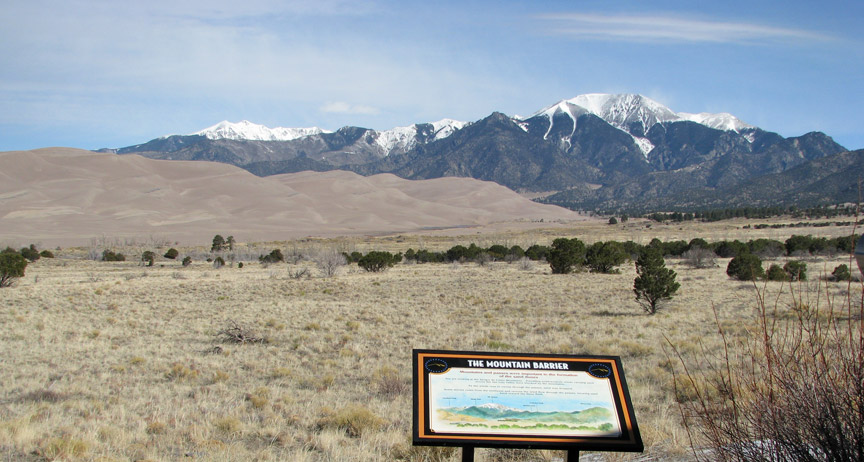
Digging a few inches into the dunes even at their peaks reveals wet sand. If the
streams were to dry up, the dunes would disappear; in fact part of the
motivation of turning the Monument into a National Park was the extra protection
of the water, which Colorado's cities and agriculture covet.
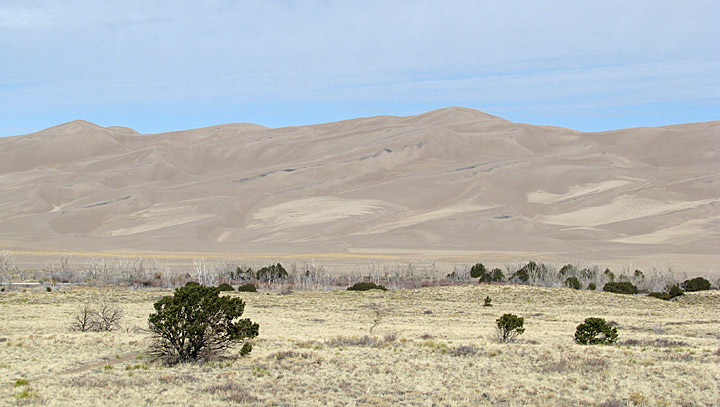

It is very easy to experience the dune-building process. This is a very windy
region, as hikers on the Sand Dunes will attest, as on many days they will be
pelted by sand and even small rocks when hiking on the dunes. The wind carries
sand and rocks from many miles away.
Text from Wikipedia
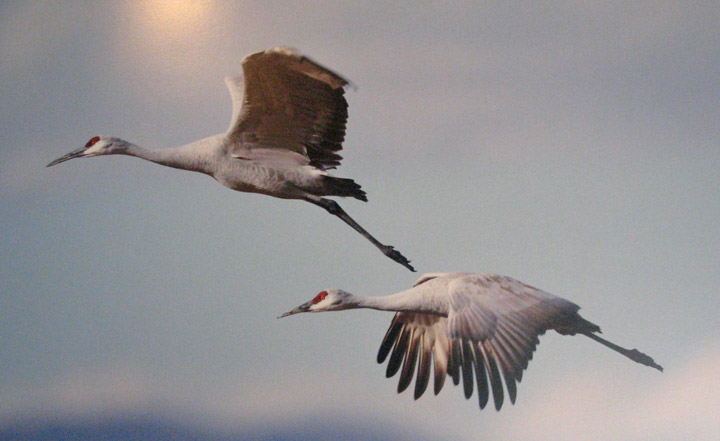
Sand Hill Cranes migrate through this area
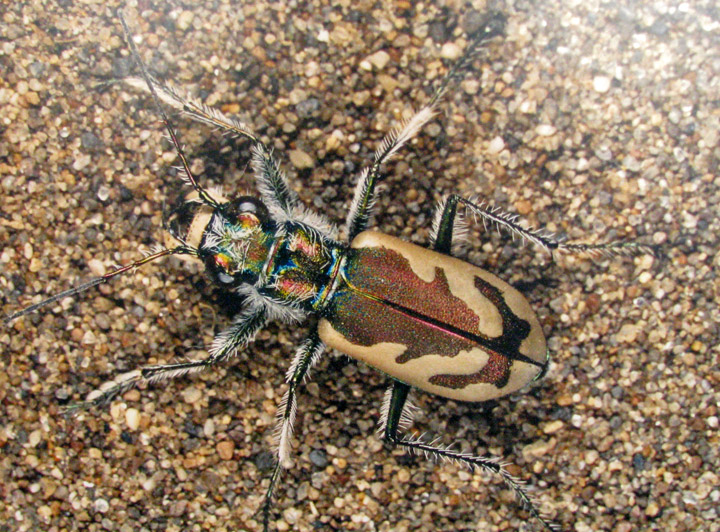
a beetle endemic to these sand dunes
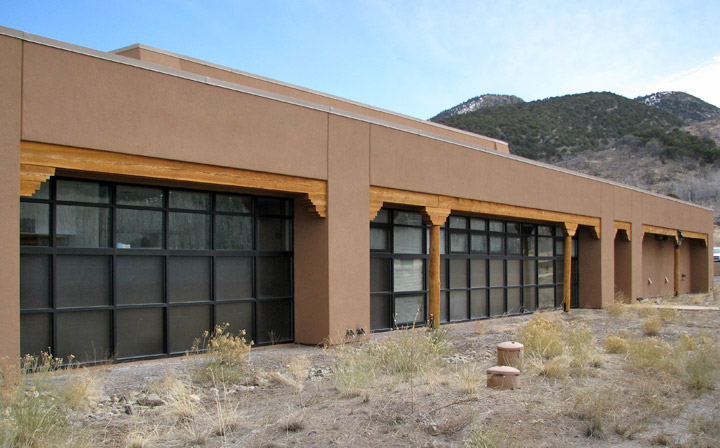
Trombe Wall for solar heating of the Visitor's Center
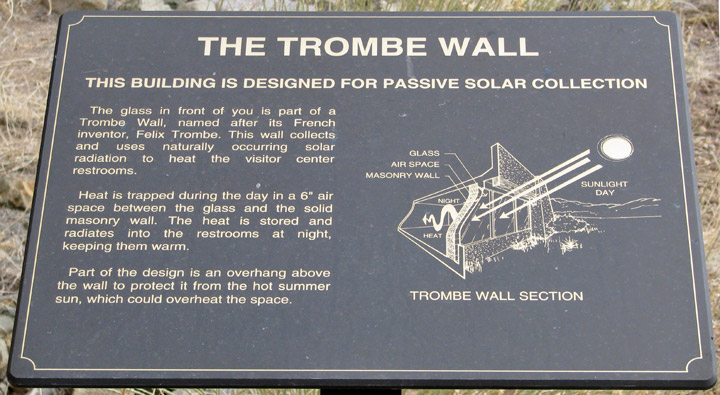
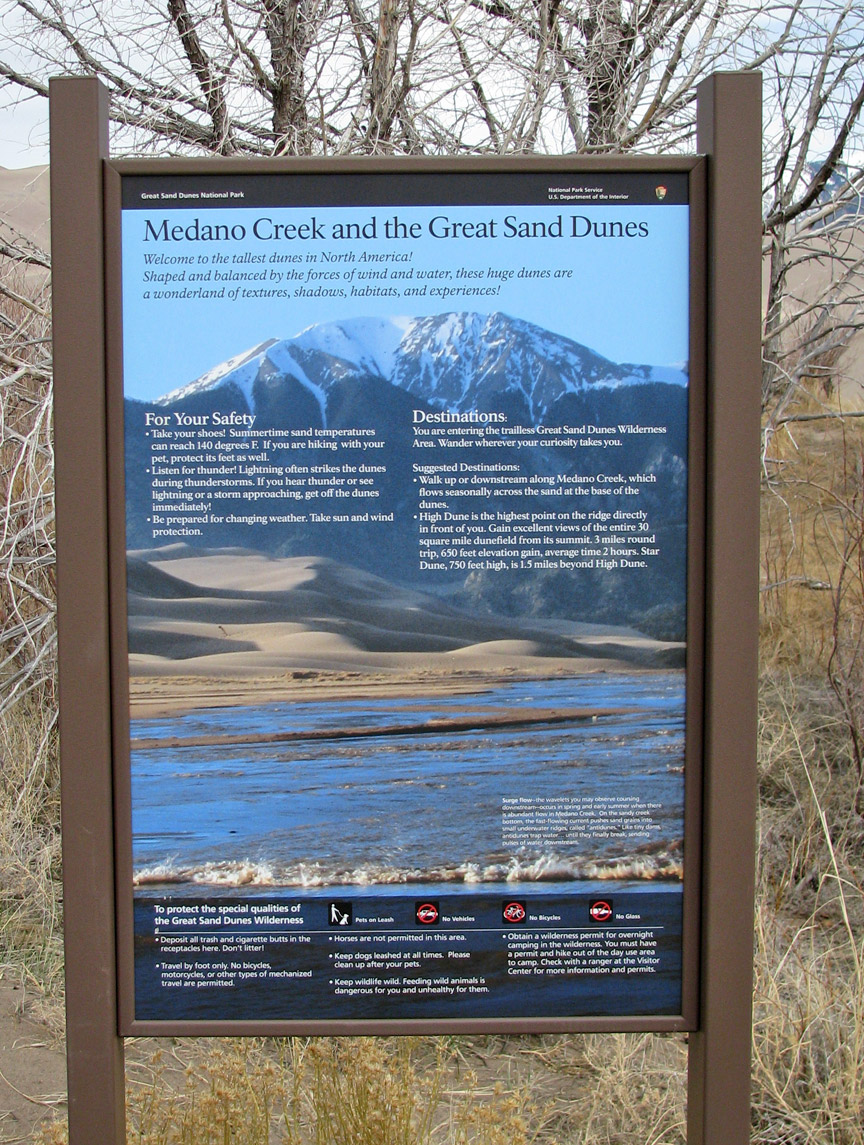
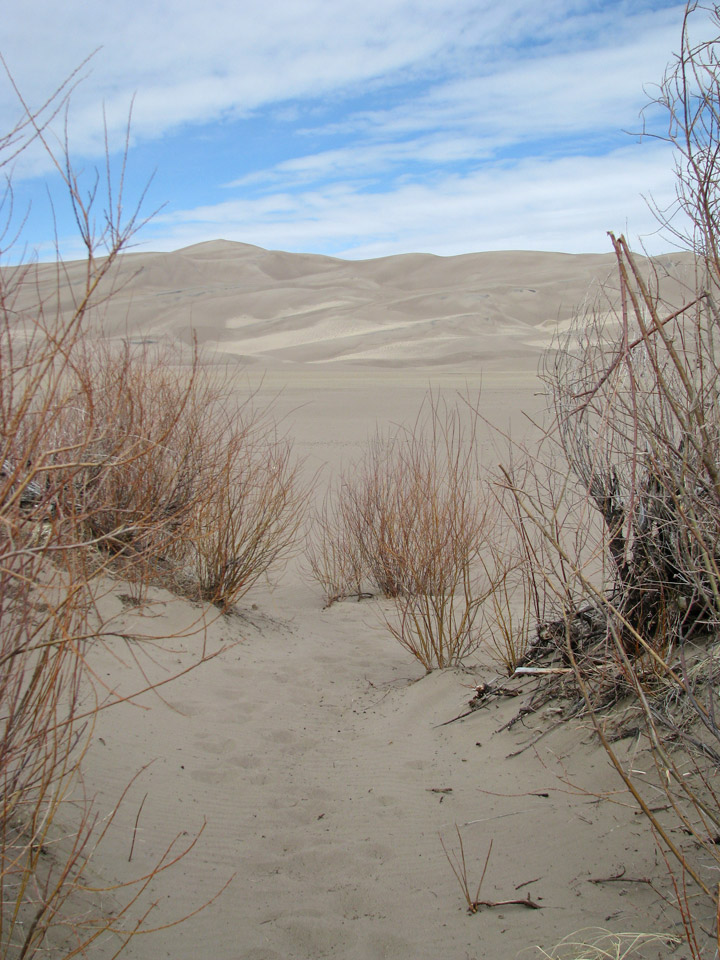
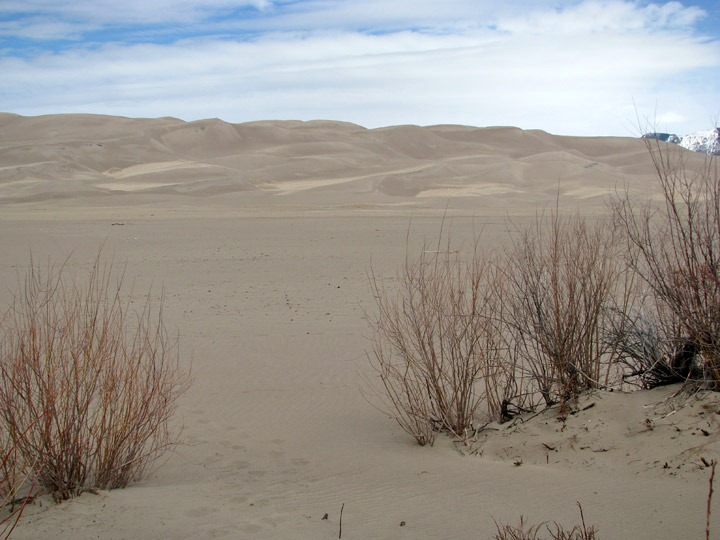

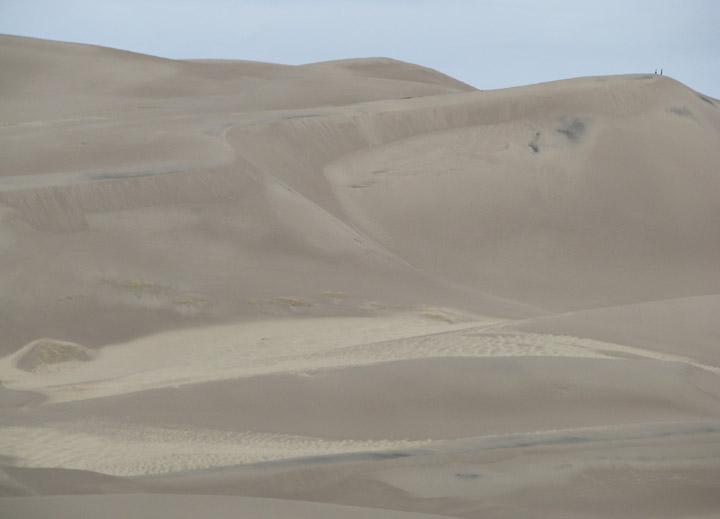
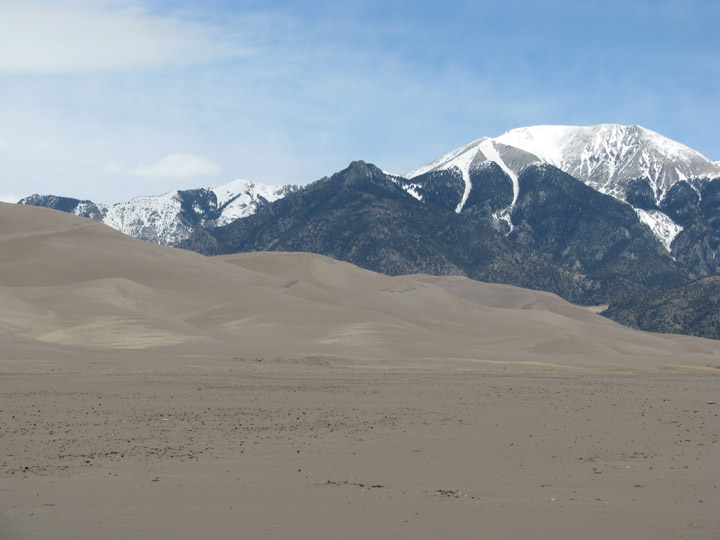
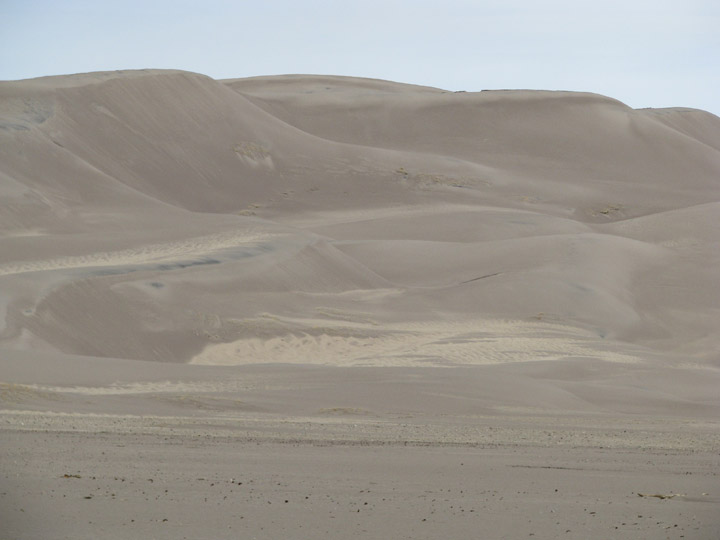
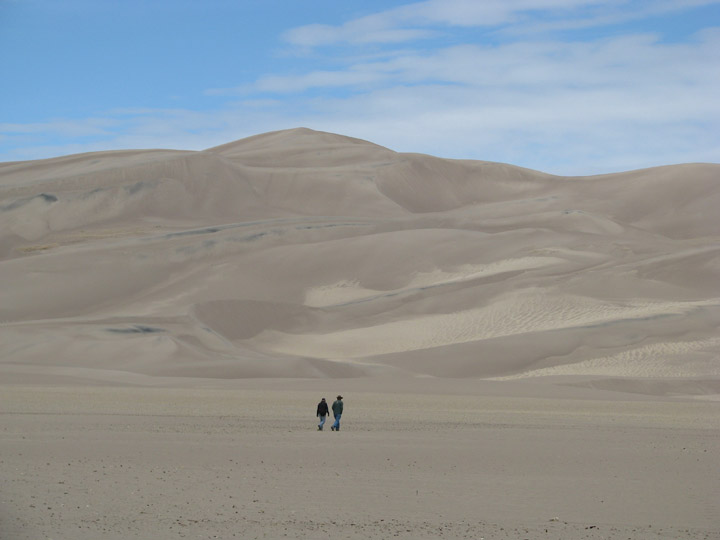
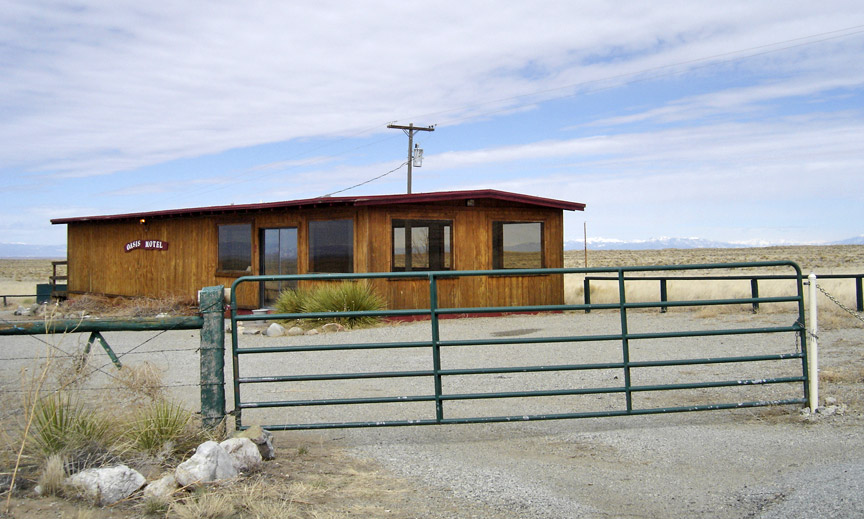
Vacancy at the "Oasis Motel"
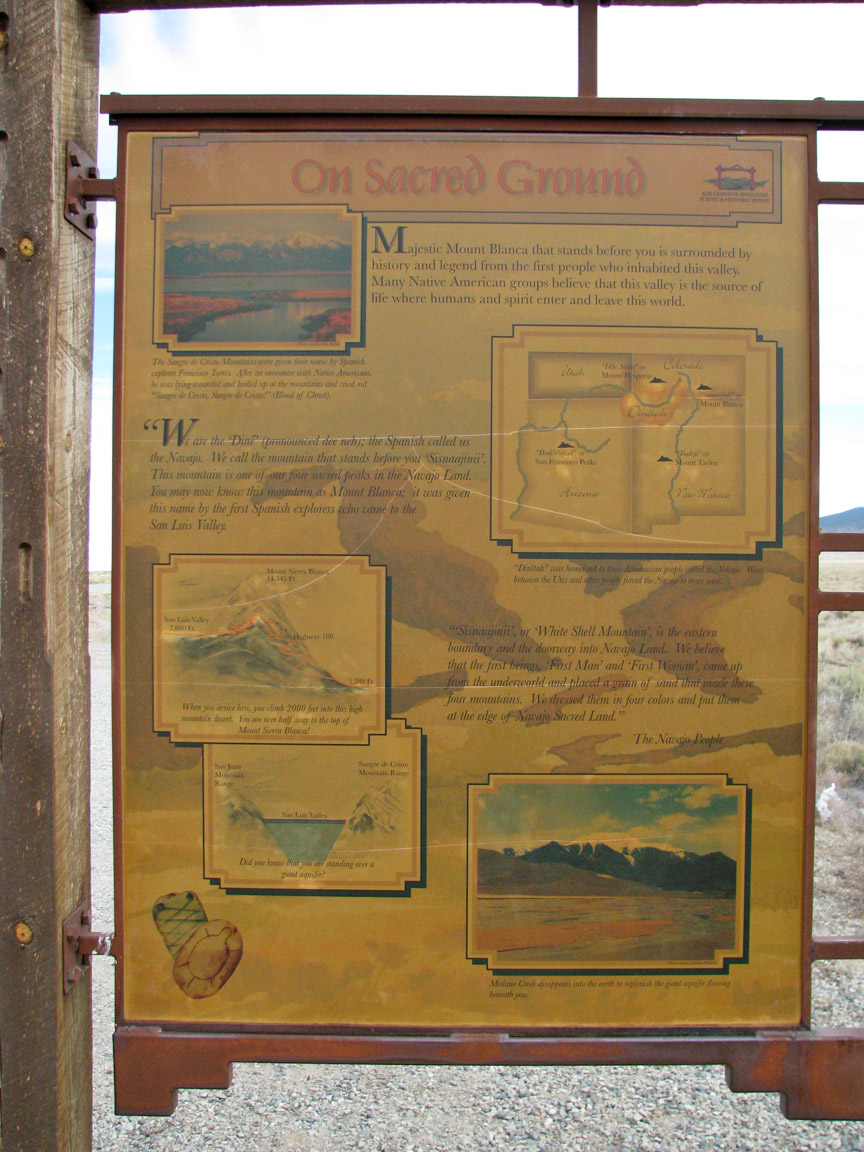
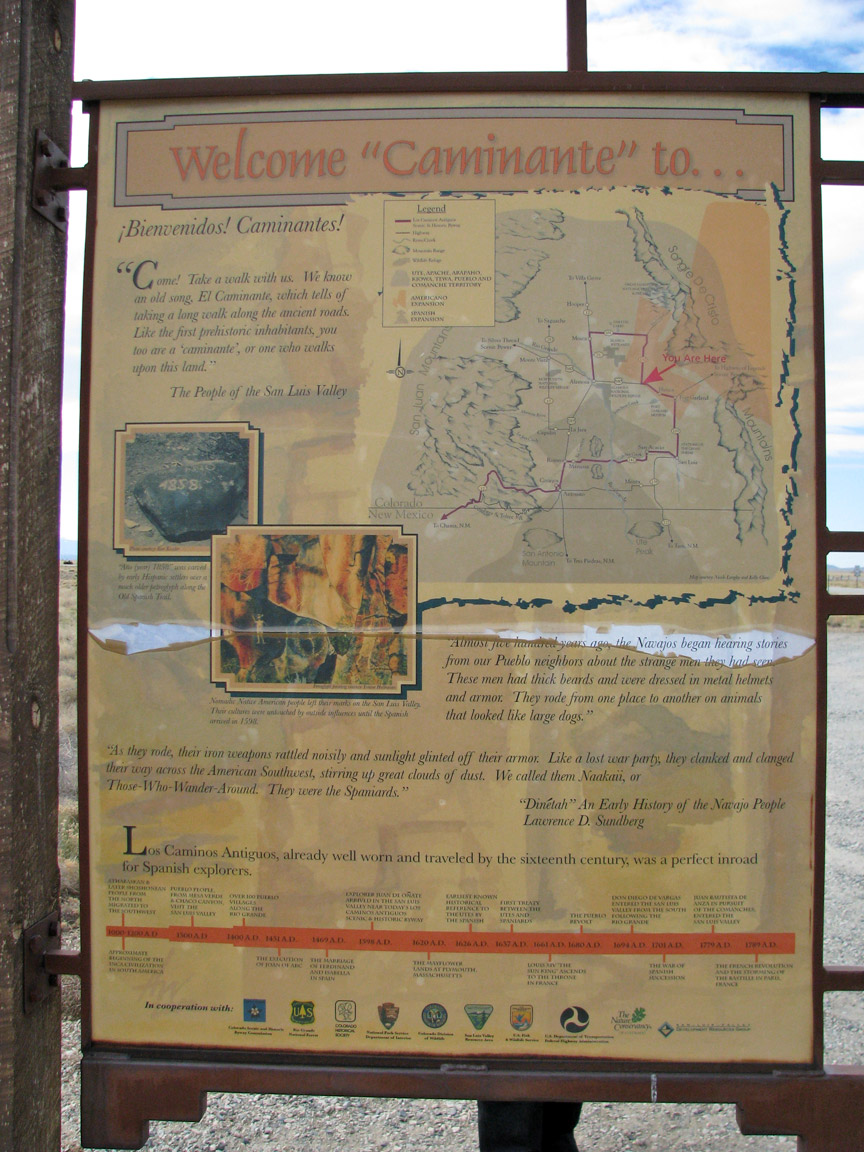
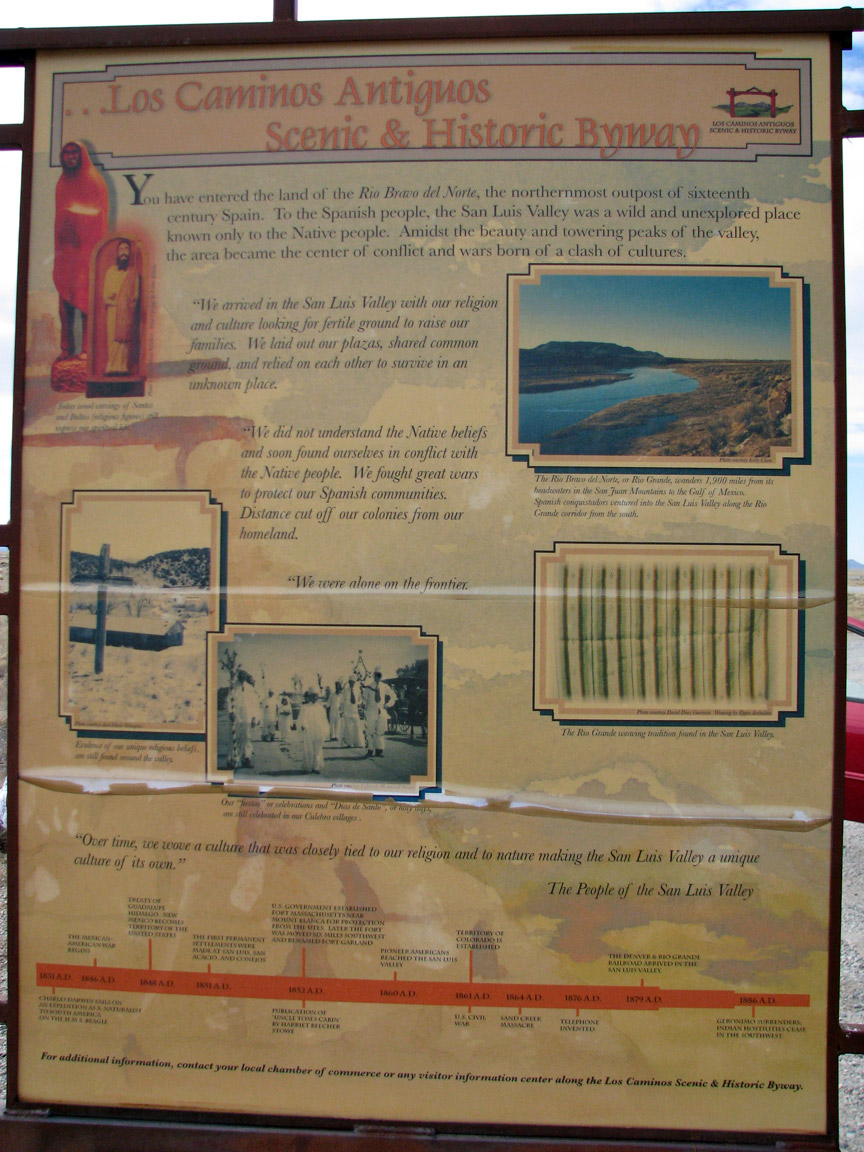
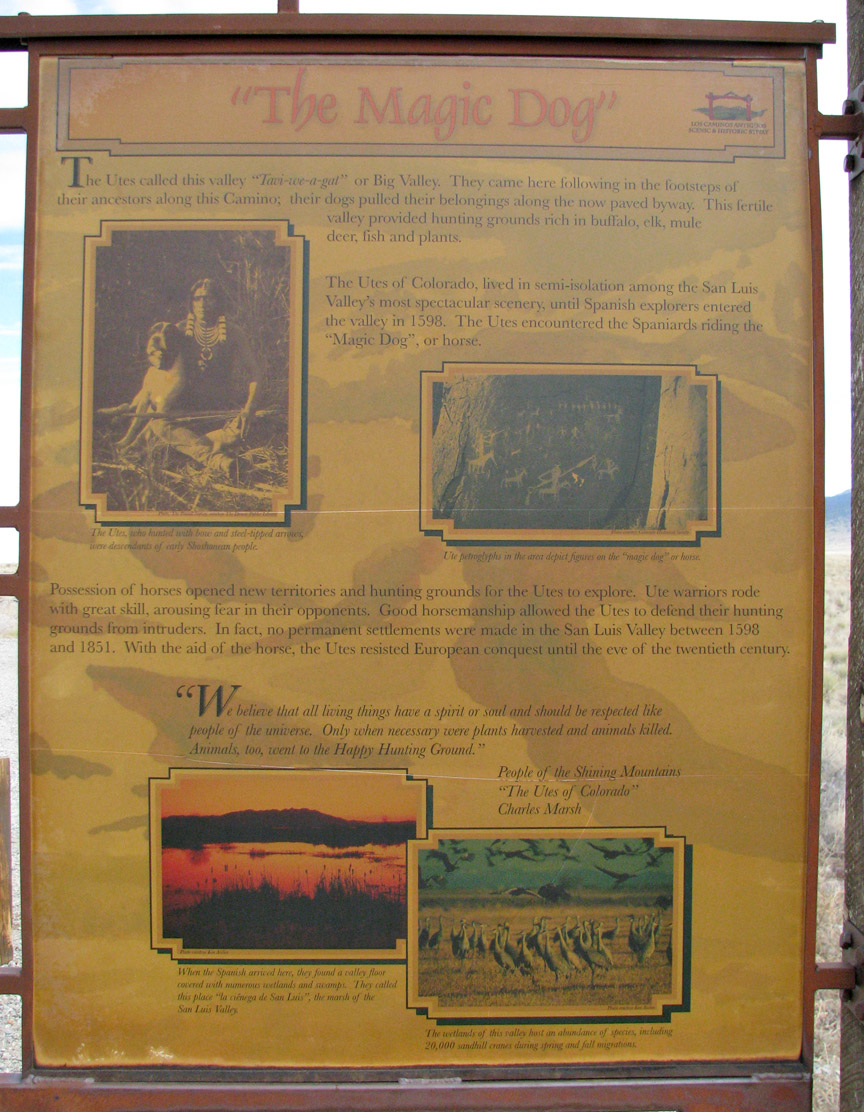
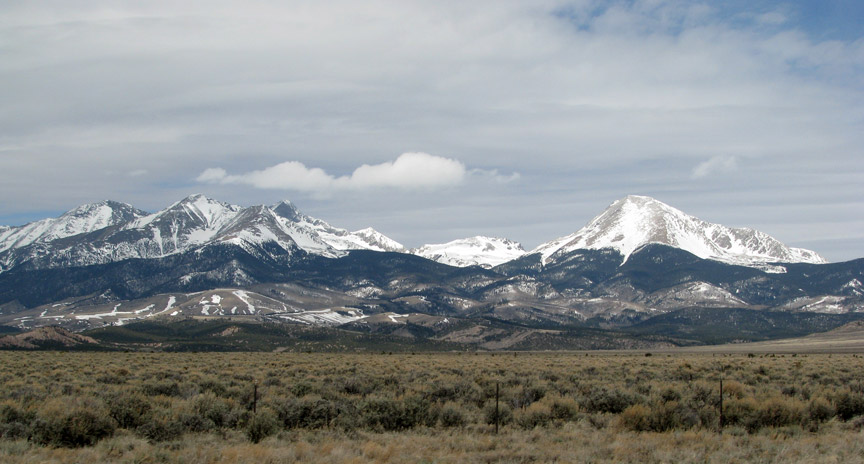
Sangre de Cristo Range

snow shed protecting the highway

Rocky Mountain tunnel

Agricultural area East of the Rocky Mountains